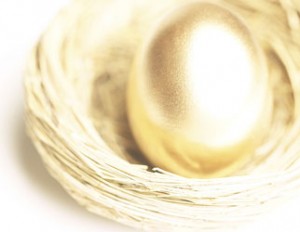The safest way to retirement
RRSPs are a great place to put your nest egg, but as Bruce Sellery explains you need to give it regular attention if you want it to meet your retirement needs.
Advertisement
RRSPs are a great place to put your nest egg, but as Bruce Sellery explains you need to give it regular attention if you want it to meet your retirement needs.
 Question
What is the safest way to invest for retirement, with the best return, other than RRSPs?
Answer
The RRSP needs a therapist. The poor thing needs someone to sit down with her and talk through her No. 1 source of angst: feeling misunderstood.
She isn’t paranoid. As your question illustrates, she really is misunderstood. But don’t take it personally—millions of Canadians don’t give her the respect she deserves because they don’t understand what she is, or the power she has. To answer your question, I need to start there.
The RRSP is not an investment in and of itself. It is a container for investments, like a knapsack is a container for your lunch. You can’t actually invest in an RRSP itself, but you can invest in things like mutual funds, stocks or bonds that go into an RRSP.
Say I ask you what you’re having for lunch. You wouldn’t say: “I’m having my knapsack for lunch.” Instead you would say something like: “I’m having fantastic leftover duck confit with roasted pears for lunch. It is right here inside my knapsack.”
So when you ask “what is the safest way to invest for retirement,” I’m going to answer what goes “into” the RRSP itself, because I believe that for most people the RRSP is the best container there is.
You could choose another container for your retirement savings. For example, you could put your retirement savings into mutual funds in a Tax Free Savings Account, or a non-registered investment account. You could buy a stake in a business or even put actual cash into a very large piggybank. In some circumstances another container, other than an RRSP, may make sense. But for most the RRSP is the best container because it allows you to defer income tax on your contributions, and to grow your portfolio tax-free. When you withdraw the money you pay income tax on it, but it still works out in your favour because of the tax deferral and the magic of compounding.
So, what should go “into” this great RRSP container? I would recommend four to six low cost mutual funds or exchange-traded funds (ETFs), available through your bank, investment adviser or online discount brokerage account. Why? These products provide diversification (“don’t put all your eggs in one basket”) and growth over time.
Here are a few important things to keep in mind:
Question
What is the safest way to invest for retirement, with the best return, other than RRSPs?
Answer
The RRSP needs a therapist. The poor thing needs someone to sit down with her and talk through her No. 1 source of angst: feeling misunderstood.
She isn’t paranoid. As your question illustrates, she really is misunderstood. But don’t take it personally—millions of Canadians don’t give her the respect she deserves because they don’t understand what she is, or the power she has. To answer your question, I need to start there.
The RRSP is not an investment in and of itself. It is a container for investments, like a knapsack is a container for your lunch. You can’t actually invest in an RRSP itself, but you can invest in things like mutual funds, stocks or bonds that go into an RRSP.
Say I ask you what you’re having for lunch. You wouldn’t say: “I’m having my knapsack for lunch.” Instead you would say something like: “I’m having fantastic leftover duck confit with roasted pears for lunch. It is right here inside my knapsack.”
So when you ask “what is the safest way to invest for retirement,” I’m going to answer what goes “into” the RRSP itself, because I believe that for most people the RRSP is the best container there is.
You could choose another container for your retirement savings. For example, you could put your retirement savings into mutual funds in a Tax Free Savings Account, or a non-registered investment account. You could buy a stake in a business or even put actual cash into a very large piggybank. In some circumstances another container, other than an RRSP, may make sense. But for most the RRSP is the best container because it allows you to defer income tax on your contributions, and to grow your portfolio tax-free. When you withdraw the money you pay income tax on it, but it still works out in your favour because of the tax deferral and the magic of compounding.
So, what should go “into” this great RRSP container? I would recommend four to six low cost mutual funds or exchange-traded funds (ETFs), available through your bank, investment adviser or online discount brokerage account. Why? These products provide diversification (“don’t put all your eggs in one basket”) and growth over time.
Here are a few important things to keep in mind:
Share this article Share on Facebook Share on Twitter Share on Linkedin Share on Reddit Share on Email